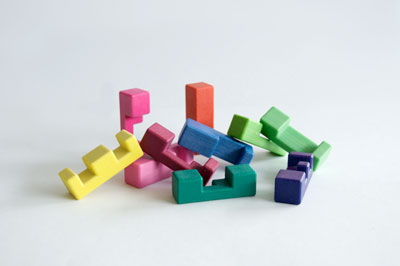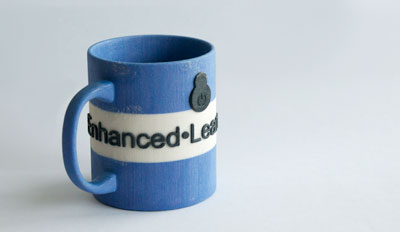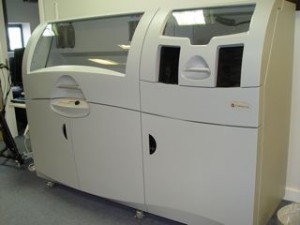Anyone want to solve this puzzle? Generated from STL files:

After a quick bout of 3DS Max, the following mug emerged from the printer. The lettering (and logo) on the mug are raised from the surface by a millimeter or so.

The mug appears a bit ‘dirty’ because, during infiltration (dipping/pouring with a fixing fluid), bits of latex glove adhered to the surface. I also modelled up, from scratch, a stand for the air nozzle used in the Post Process Unit of the printer:

This morning saw the delivery of a ZPrinter 650 3D printer made by Z-Corp. Yesterday, the printer arrived on a delivery vehicle that didn’t have a platform for lowering the crate, so it had to go and come back on a suitable delivery vehicle.
Anatol, from Thinglab (Inition), was here to supervise the delivery. Given the sheer size of the printer, we decided to take it out of the crate on the back of the lorry, and then separate the Post Processing Unit (PPU) away from the main body of the printer, allowing us to get the printer off the lorry, in the building, in the lift, and up to our floor. Taking it out of the crate in the back of the lorry requires sufficient space (about 6m) to get the printer out of the crate. Conveniently, Z-Corp have cleverly designed the crate to include in-built ramps that are deployed to roll the printer off the crate.

Once in the building, Anatol was able to prepare the machine ready for the first print – a head alignment.
The Technology Enhanced Learning (TEL) Research Group is actively investigating effective ways of exploiting technology for learning. We are investigating the use of 3D printing and 3d scanning for a wide range of learning and teaching. This blog will document our work.